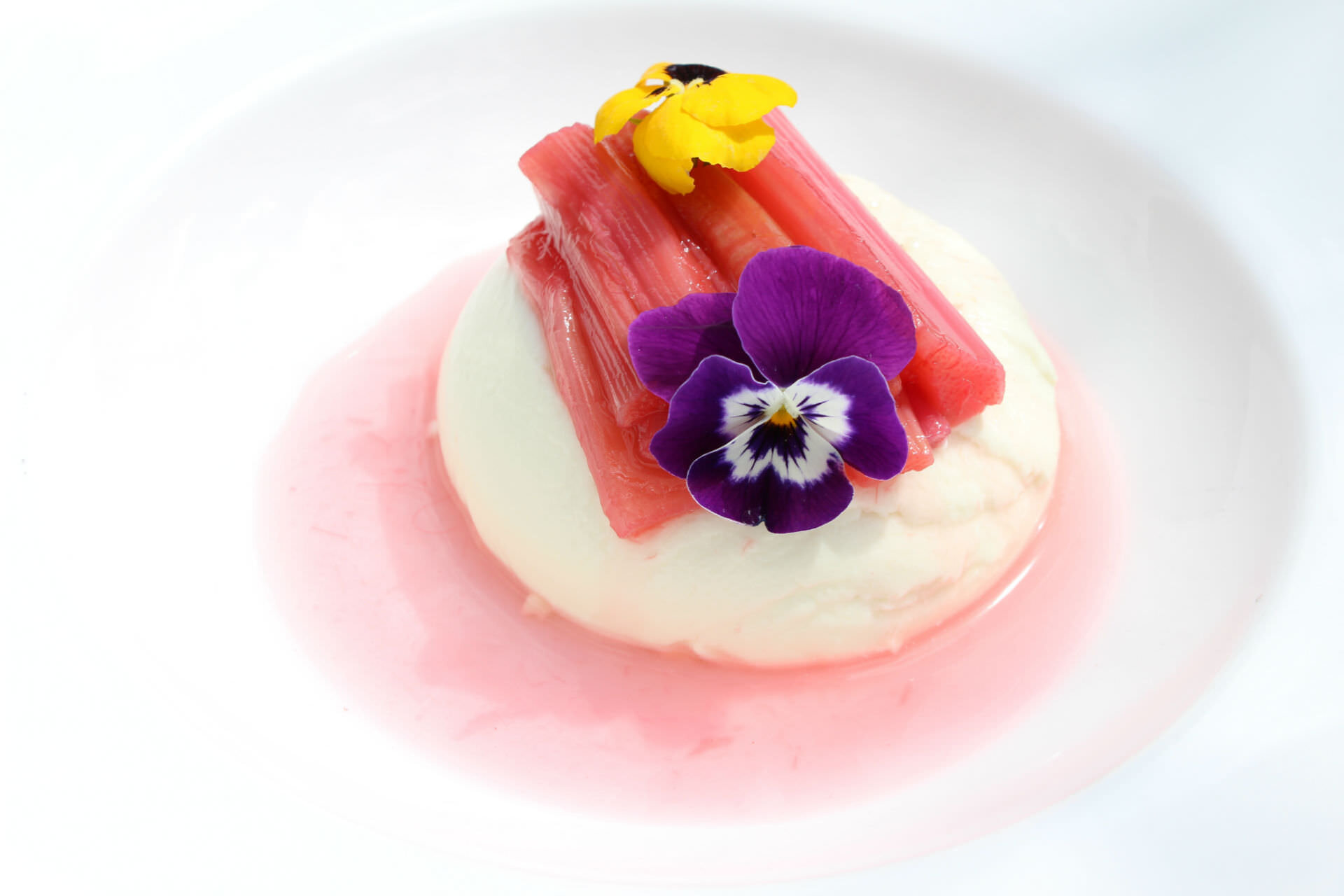THYME TO BLOOM
THYME TO BLOOM
Thyme is undisputedly all about food: a kitchen garden & farm at the heart of the estate, a cookery school, an inspired restaurant at The Swan, guest chefs coming to cook with our produce and a visionary team in our kitchens. Fruit and vegetables in abundance, but the estate has its herbaceous side, designed by award-winning landscape designer and gardener Bunny Guinness. The floral planting is a narrative between the formality of the garden you might expect to find surrounding an English country house and the natural meadows and woodland that are carefully nurtured on the far reaches of the estate. At this time of year the wild planting emerges with drifts of spring bulbs nodding in the areas of long grass, as one patch of colour fades so it is replaced with further waves in a seasonal celebration. The chefs know the edible value of our decorative planting and this May we are embracing all things floral in a response to the iconic Chelsea Flower Show. Chelsea has for many years championed the edible uses of flowers in May giving us all the inspiration we need.
The culinary exploration of edible flowers is not a new food-trend, our earliest ancestors were hunters and gatherers who will have found sustenance in every part of the plants in their diet. The medieval world was flavoured with elderflower and the delicate medicinal blooms of herbs; Renaissance cookery was adorned with dianthus & carnations, decorated with violets & cowslips, while peony roots were the food of royalty; and the Victorians took baking with flowers to new heights, with a symbolic floral language fuelling the romance of flower-strewn sweets & savouries. There isn’t a culture that hasn’t been inspired by floral flavours - mustard flowers ran through Roman love potions; the cultivation of saffron crocuses in Persia introduced our most expensive spice; wine was made from chrysanthemums in Tang dynasty China; there is documentation of flowers being cultivated throughout the Mediterranean for thousands of years.
Our chefs and gardeners are busy planning for ‘Thyme to Bloom’ in May. The stars of the month are without doubt Borage delicate star-shaped, sapphire-blue flowers with a fresh cucumber taste - spectacular in salads, crystallised for cakes or decorating cocktail glasses; Calendula or ‘Pot Marigold’ (so named by Medieval monks who added the dried petals to the cooking pot as a saffron substitute), with their peppery petals perfect sprinkled over everything, the buds and growth tips lovely in a light tempura; Roses – if they smell delicious they will be delicious – scenting jams, jellies, cordials & waters.
For all their delicious history, in recent decades the edible flower had rather fallen from favour in British kitchens, a decline that has definitely been reversed by celebrity chefs and thoughtful menus. Available online, in florists and grocers in the warmer months we can all use pansies or violets to add a little seasonal magic to our salads or create a floral tea with rose petals, lavender or geranium. Even better, fill your flowerbeds, window sills or a pot by the back door with a celebration of flowers that will not only look gorgeous but taste wonderful too.
Interested in sharing the celebration? We are bringing flowers into every aspect of Thyme in May, we have devised menus, planned cocktails, woven edible blooms into the cookery school - the scented flavours of spring will be everywhere, in the gardens, in vases, on plates and in glasses.

